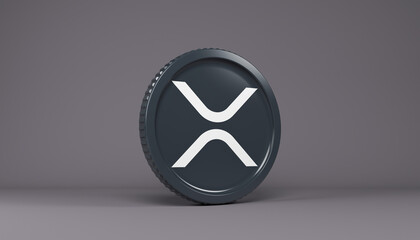
SWIFT’s decision to test a blockchain prototype with Consensys (Ethereum) has stirred debate in the crypto space, raising concerns about whether XRP’s role in global finance may be under threat. While Ethereum may offer experimentation, a crypto analyst argues that the XRP Ledger (XRPL) already delivers enterprise-grade performance, compliance features, and real-world adoption that institutions rely on.
SWIFT’s Blockchain Partnership Challenges XRP Position
On Tuesday, September 30, crypto market expert Pumpius shared a thread on X social media, unveiling the recent collaboration between SWIFT and Consensys that has triggered panic in the market. Although the partnership is presented as an innovative step, Pumpius argues that it exposes a fundamental weakness within SWIFT.
According to the analyst, SWIFT has traditionally depended on legacy financial rails and is now attempting to modernize by leveraging Ethereum-based solutions. However, Pumpius points out that Ethereum continues to struggle with scalability, high transaction fees, and centralization concerns. He argues that while SWIFT is aware its legacy rails are deteriorating, adopting a “band-aid fix” is no replacement for core infrastructure.
Ripple, on the other hand, has already moved beyond the experimental stage. Pumpius notes that the XRPL is designed to process transactions within three to five seconds, at minimal cost, making it far superior in terms of speed and accessibility. Unlike Ethereum prototypes, the analyst stated that Ripple’s solutions are actively in use across international payment corridors, supported by partnerships with over 100 banks, regulators, and major payment providers.
Another major challenge that debates SWIFT’s Ethereum venture is compliance. Pumpius explained that global financial systems demand robust Know Your Customer (KYC) and Anti-Money Laundering (AML) frameworks—areas where blockchain options often face limitations. He highlighted that Ripple addresses these challenges head-on with the integration of the DNA Protocol, a system enabling verifiable digital identities, zero-knowledge proof verification, and on-chain compliance mechanisms that satisfy regulators while preserving user privacy.
Why XRP Holds The Long-Term Advantage
Upon further review of Pumpius’ analysis, he highlights that XRP’s position is strengthened by fundamentals that remain significantly relevant to institutions. He mentioned that Ripple has gained legal clarity in the US following the resolution of the SEC lawsuit and is also aligned with ISO 20022, the global standard for financial messaging.
The analyst further pointed to Ripple’s growing momentum, highlighted by the launch of the RLUSD stablecoin with SBI and its ongoing applications for banking licenses. Against this backdrop, he emphasized that institutions do not chase hype but rather adopt infrastructures that reduce costs, boost efficiency, and ensure compliance with regulations. In his view, RippleNet and the XRP Ledger already meet all three requirements, which explains their growing global integration.
Concluding his report, Pumpius calls SWIFT’s blockchain move a “desperation play,” framing it less as a threat and more as a sign that change is inevitable. He also described the effort as experimental, contrasting it with Ripple’s rollout of solutions while Consensys pushes Ethereum through lobbying efforts. To XRP investors, he stressed that they are holding an asset with the potential to reprice immediately once new financial rails are fully activated.


















